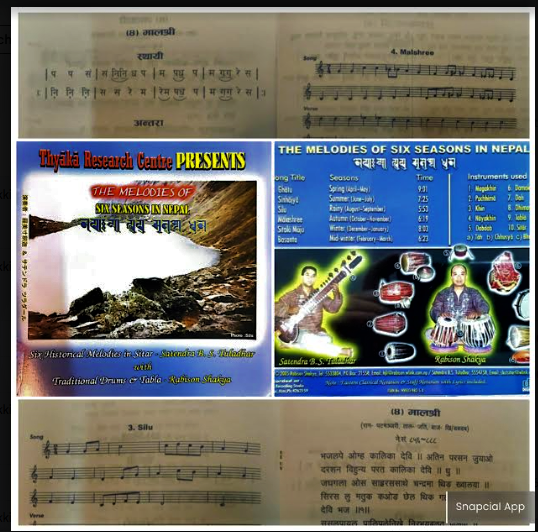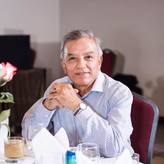Mohani Nakh: Special
One-to-One Talk – Malshree Dhun
Being with Sikkim Newar Guthi at Rhenock
“Classic devotional music has been in existence in Nepal for more than a thousand years. The time period between the 11th to 17th centuries saw an increase in literary activity in Kathmandu. Numerous devotional music, dances, and plays have been found from this era. Most experts believe that the literary development during this era culminated in the development of Newa music form.
“The earliest treatise on Malshree Dhun found till date is a book in Nepal Bhasa called Sangit Chandra. The book was written as an appendix to Natya Shastra by the king of Bhaktapur Jagat Jyoti Malla and his minister Vanshamani Ojha.”
---
To know further about friends were requested to help with this but of no avail as most of the songs were later versions tuned to Malshree Dhun until Maheshwar Shrestha sent the link for the latest one published in ekantipur.com - Malshree Dhunko Mulmanthan by Govind Nyaupane. Well-compiled and the subject matter was dealt with in all details elaborately. Referring to the study of the history of the Newar music quoting music exponent Ramsharan Darnal in Nepali Sangeet Sanskriti, historians have mentioned as early as Nepal Sanvat 797 during the reign of Bhaktapur King Jitamitra Malla a scripture located at Kumari Chowk describes of the Malshree song. Referring this he writes in the book that Jagjyotirmalla had written the Malshree song in the book Geet Panchak. Archaeologist Janak Lal Sharma in his book Josmani Sant Parampara ra Sahitya mentions that King Ran Bahadur Shah composed the song devoted to Devi Bhairavi to the tune of Rag Malshree. It would be unfair to devulge everything from this scholarly article but to mention the music which has been the heart and soul of our society during this festive season from cultural as well as religious aspects of life combined.
Since the main purpose and sole intention of this attempt - more than to go into the details of its historical background was - to know the original lyrics in Newar/Nepal Bhasha, his last resort was Asha Safu Kuthi, the temple and goldmine of knowledge with almost all the scriptures related to the Newah Civilization. Even Raja Shakya mentioned this fountainhead of knowledge; here he dedicated his prime life suggesting getting it from his successor, our good friend Sarad Kasa. He was helpful in digging out the original Newar song promptly which is believed to be the first tuned to the music of Malshree Dhun - a devotional offering by the King.
(501) ||Rag Malshree ||
Jai jhijhi Ramji tirath hila waya
Nepal silwant thas re ||dhu||
Atir thwasansare 2 Gulita maya kaay
Wanye Baikunth bas re || 1||
Barjajogini Swakarnaswari Pashupati Bagmati re
Nas sahyan yay re 2 dako paap phuke ||
Kasiv saman re || 2 ||
Hanumant Ghatsa Garud Narayan Mahadev gan re ||
Buddha Ganpati 2 Ram Siya Bala Sugriv an re || 3 ||
Taya Chapalya Taleju Bhavani Mahabhairab
An bijyak re ||
Riddhi ranjit re 2 Malla Thakur Jai
Partap Bol re Jai jhijhi || 4 ||
Ranjana Lipi Lexico-Epigrapher Rabison Shakya mentions in the inlay card of his CD The Melodies of Six Seasons that Malsri to be dated as far back as Nepal Sanvat 856-88 with notations and lyrics in Nepal Bhasha as well as Raag and Taal besides musical instruments played with each component of the historical melodies in sitar with the accompanying traditional drums and tabla. Though Malshree Dhun now comes in all modes on YouTube today, the best those audio-cassettes days popular was by Sur Sudha, the musical group.
While mentioning of the Chandra Dramatic Club, Rhenock Dr. Shanti Chettri in her Sikkimma Nepali Sahityako Sfuran for the Madan Smarak Samman 2013 at Banaras, described that they staged dramas written by Paras Mani Pradhan* like Harihchandra, Balak Dhruva Gautam Buddha besides singing devotional songs from the religious scriptures like Geet Govindam and Dash Avatar in Nepali and Newar languages once in a week in the Sri 3 Siddheshwar Shivalaya Mahadev Mandir once a week. When asked whether Malshree Dhun was played during those days, she writes that Kaziman Pradhan* used to sing playing madal, Bahadur Kami* used to do Swasti Vachan to the tune of madal. These happened in the front yard of Dal Bahadur Pradhan* before the fire of 1957 engulfed Rhenock Bazar - though no written documentation is available.”
It would be interesting to some of our readers to know the popular song written to the tune of Malshree Dhun by Jankavi Durga Lal Shrestha:
Haye re, Jyapuni Tata, guli hisi dure chh la
Jab lhati kal: jwana:, deke wane tyana la
Satu batu chhthucha; lwake hyangu sachika
Pichuse chwangu chhyale, na la swan nipucha
Na la swan na li then, chh nan saap nalicha
Chhant swa swan moh jul: Mohani jakan yana la
Khwa chhagu yanaaloo, Nepali ban loo
Sama jyaya va maa then chhyon bhacha kwachhu
Khwa:bhacha haku khwa:, kapale aahaa
Punhi siya Timila then, sinh chakmak la:
Lanya butta swanfo loo thwela thwela dhai then joo
Firi firi sangu gaachaan sa tu then chwanigu
Chhamhu chaagu mhcha chhangu hisiyagu pocha
Chhn palaa: chhee wan tata, lan he nyasi nyasi cha:
Mikha chhangu moosa: aila:, ghutukka he twane la
Chhanta jaka swaya chwansa, matwan nan kaaila
Khwaa: ya dathwee chwangu nhyan-nan, gulijak chhayapaa chwan
Jovanya anti haagu aila dhaa then chwan
Suth siya bela, Mohaniya mela
Chh naap jee nan tataa, deke waye la
Ji nan chhuye ti re tataa, na:laa swan nipucha
Jitanan la bhacha jusaan, Dharma khuni laaila
This Author did not realize when Sarad asked him if the song written by Jankavi Durga Lal Shrestha (of Phulko Aankhama Phulai Sansar – fame) should also be sent until he saw the lyrics shared on Facebook and going through it, to join him like many other admirers. Rather this song has befittingly complemented the beauty of the music that has surpassed all and swept the Nation and beyond during this season since time immemorial. Interested may further enjoy the song rendered by Ramesh Tamrakar on YouTube beautifully depicting some aspects of the Newar culture as described by the Poet. Some of the stanzas skipped yet it shows how he was mesmerised by the beauty of the Jyapuni damsel to charm her away going to the temple, using the best metaphors!
---
Disclaimer: This is neither the work of a research scholar or subject-expert nor that of some historian but the Author’s personal account of memories to cherish and treasure, often on a detour here and there en route to share the joy of the journey called life. Much time and effort are devoted in making to documenting and sharing here for the sake of our progeny and those interested to pursue research works to be rewarding many PhDs. Some names (asterisk* for those no more), quotes, places and events mentioned are just to connect with and no malice whatsoever intended. He can be reached at [email protected] and his books are available at www.rachnabooks.com.
About the Author
“Rajiva Shanker Shresta, a retired ace bureaucrat, is a prolific writer-cum-walking encyclopaedia as far as Sikkim is concerned. His monumental book 'Sikkim : Three Decades towards Democracy – Evolution of Legislative System' (2005) is much referred book....” Keshab Chandra Pradhan, Former Chief Secretary to the Government of Sikkim in his Memoir The Life and Times of A Plantsman in the Sikkim Himalayas (Revised/Updated 2018)



 RSS Feed
RSS Feed
